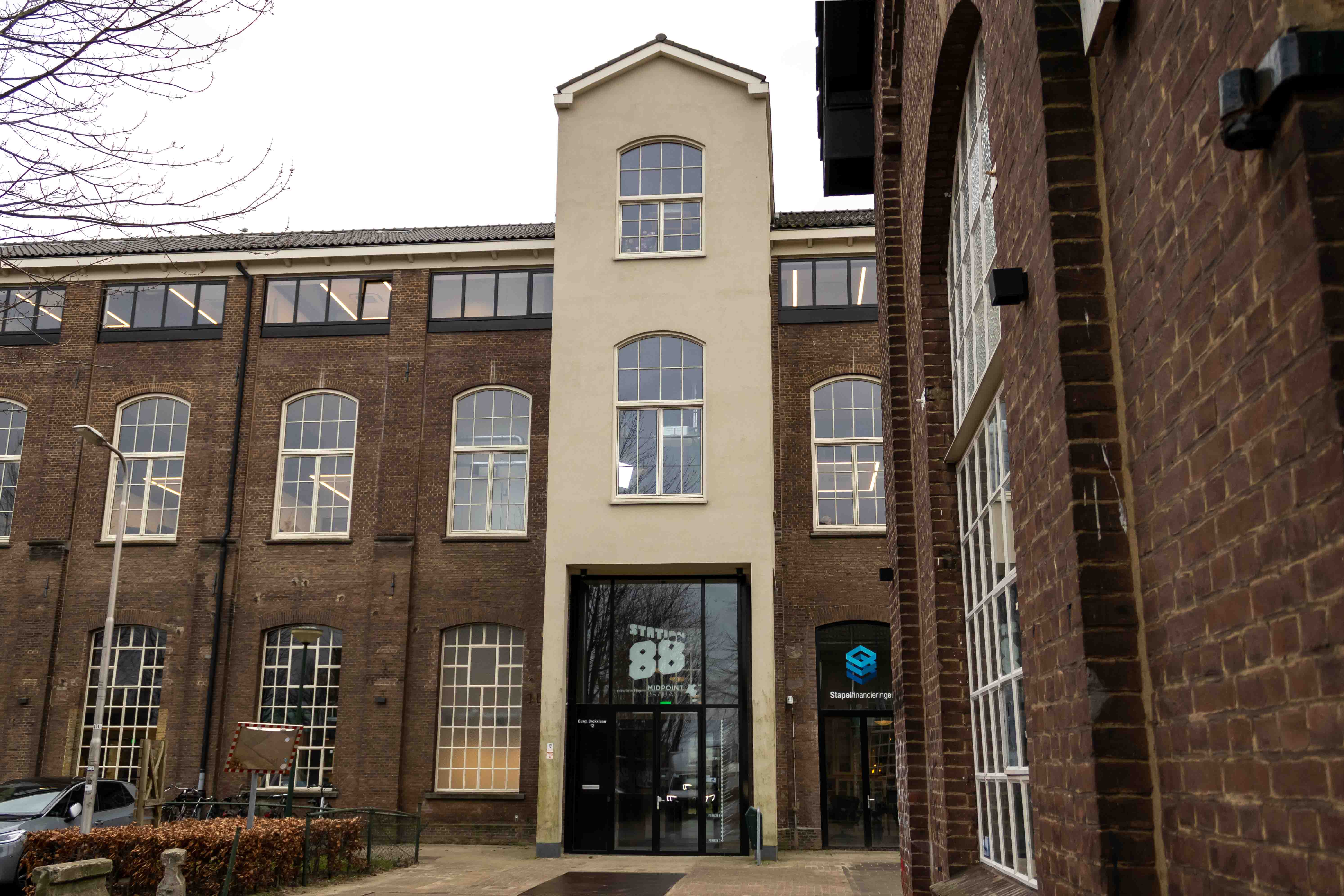
That learning something is easier than unlearning something may seem obvious. Take exercise among children. An active child will be more inclined to continue that later on in life. But however simple it may sound, it is a complex issue, says Dave Van Kann, as of April 1, lecturer in ‘Leren Bewegen in en rondom de school‘ (Learning to to move in and around school). He is a new lecturer on a long-running line of research within the lectorate in the Netherlands..

Extracurricular activities
Do you drive your children by car to school or can you take them there by bike or on foot? Do they then spend almost all day sitting on a chair in a classroom? Or has the teacher come up with some games that get kids moving? Do the children have physical education classes? Or does the teacher give the gym class herself? And what about extracurricular activities? We live in a time when YouTube videos and video games like Fortnite beckon children. And also in a time when it is not a given that children can play freely everywhere outside, e.g., due to busy streets.
“What makes it so difficult is that a child spends a considerable amount of time in several different places during the day,” says Van Kann. “You can teach a child something at school, but it is also important to include the parents and the environment where a child is growing up. Another factor is that, for a teacher, exercise is one of many subjects that needs attention. At a time of teacher shortages, it’s already challenging enough to have someone standing in front of a class at all.”
Within the lectorate Move to Be, the researchers work closely with this professional field, says Anoek Adank, lecturer at the ALO and one of the researchers within the group. The lectorate carries out research together with elementary schools, municipalities and GGD municipal health services, and also involves parents and children in particular.

Local versions
That started back around 2007. A time when the lack of exercise among children was receiving wide coverage in the news, Adank goes on to explain. “We then wondered what a school could do together with other parties within a municipality to promote a healthy and active lifestyle among young people. And how we can help with that.”
Back then, elementary schools were inundated with projects aimed at promoting a healthy and active lifestyle among children. Adank, together with her colleagues and the GGD Hart voor Brabant, GGD West-Brabant municipal health services and the municipality of Tilburg, developed the ‘Basisschool in Beweging‘ (‘Elementary School in Motion’) methodology. This methodology provides insight into opportunities for a school to raise the level of physical activity of children, whether or not through projects that already exist. “A methodology that has been running for fifteen years now,” says Van Kann, “‘Gradually over time, we constantly adjust these into ‘local’ versions.” Recently, the methodology was further developed to cover all of childhood, from birth to twelve years of age, Tis is referred to as ‘Gezond Kindcentrum in Beweging‘ (Healthy Child Center in Motion).
It was, in retrospect, the start for a line of research that Is still ongoing on the promotion of exercise in and around elementary school, says Van Kann. From Maastricht University, the new lecturer conducted research on Active Living, which he also obtained his PhD on in 2017. He joined Fontys Sports University as a teacher-researcher in 2016. “Basisschool in Beweging and Active Living have been the first building blocks. We continue to go more in-depth and build on the knowledge that we have gained.” Van Kann refers to projects such as KEIGAAF, SALTO (Stimuleren van een Actieve Leefstijl/ Encouraging an Active Lifestyle through Top gymOnderwijs), Bewegend Curriculum and Startvaardig.
KEIGAAF
Adank’s initial research developed more and more. It led, among other things, to her doctoral research. The main research question concerns how physical education can foster an active lifestyle in children. In this, the added value of specialized teachers in physical education is key. In 2018, she was awarded a NWO PhD grant for teachers for this.
Adank: ” When ‘ Basisschool in Beweging’ started, I never thought that promoting an active lifestyle among children would be and remain so topical and important. We felt it was important at the time to tap into that. We still see this social relevance today. I am happy that we can do broader, more in-depth and above all very practical research from within the lectorate. Together with students and school teachers, PE teachers and school boards, we explore what is needed and what can be done at a school to make sure that (physical) education makes students enthusiastic to start exercising. Through participation in sports and exercise activities – now and in the future. We are looking beyond the gym. What does more or more exercise during the day mean, for example, for the schoolyard, the school curriculum, but also what does it mean for the neighborhood, the local sports associations and for the neighborhood?”

One project that was primarily focused on that connection coming from the school with the neighborhood and the hom, is KEIGAAF. “Again, it’s something that stemmed from those earlier insights gained from Basisschool in Beweging,” Van Kann explains, “and from my Active Living doctoral project, where the focus was much more on trying to design the school surroundings as inviting as possible. So that the surroundings entice students to get moving.”
Student Council
For example, within KEIGAAF, the Salto international elementary school De Opbouw built an extra playing field that the pupils themselves designed. Where children can also play soccer, horse around or slide down the zip line outside of school hours. A field that is about three hundred meters away. Paving stones in the style of Hansel and Gretel lead the way to it from the school. The key to this project was that the school allowed the pupils to come up with a solution themselves for the schoolyard that was ostensibly too small, says Harry Voss, director of the elementary school.
At first, pupils from the student council came to Voss complaining that the schoolyard was too small and boring. “Which was also true,” says Voss. “There are some restrictions on a schoolyard; for example, there has to be a number of parking spaces. So, expanding it was not an option. Which means that there are too many kids in one place to be able to run or play soccer freely.” Voss got the children to cycle around the neighborhood to look for a solution. It turned out that one was available just three hundred meters from the school. A grassy field, with ‘poorly maintained’ playground equipment.
The children wrote a letter to the municipality asking permission to use that field as a playing field. Voss read it through with them, “although the children did write the letter themselves.” Voss and Van Kann also met with the municipality. The municipality approved their request. Pupils and teachers of De Opbouw redesigned the field together with the municipality of Eindhoven and Fontys Sports College.
Ingrained
Each group has an extra 15 minutes of playtime at least once a week. Voss: “That is deducted from the teaching time, but you just can see that when the children come back to class, they have so much energy. They are full of beans. You notice that you can do much more with them in class afterwards.”
It costs each class about three minutes per day of lesson time per week. “And the benefits are huge. They go to that field with two groups at a time, and that in turn frees up more space on the playground. The walk to the field is just ingrained in our system. So an important side benefit is that pupils are also spending extra time on actively moving from place to place.”
To make sure that the children can move as safely as possible from the school to the field, there are paving stones marked with arrows to and from the school in the neighborhood. “That’s another cool ad for the school and creates more of a sense of the theme in the neighborhood around the school.”
Subject teacher
Within Salto, Voss oversees the sports and exercise working group. “Salto has actually always been sport-minded,” he says. Every Salto school has had its own PE teacher for years. Voss: “I can give a pretty good gym lesson, but if you have a a proper PE teacher, then what I do is child’s play. They’re constantly busy. It’s a joy to watch. A PE teacher like that knows what they are doing. Where I would quickly label something as dangerous, they say, ‘Why is it dangerous?’ They know exactly what to do.” Working with a subject teacher, was the start for a long-term cooperation with Fontys Sports University, Voss adds.
The Salto school community has, among others, interns from the Fontys Sports University. The PE teachers follow knowledge sessions organized by Fontys. In addition to Adank’s doctoral research, the Salto schools are working on other projects within the line of research ‘Stimuleren van beweging op en rondom basisscholen’ (Stimulating movement in and around elementary school).
Setting things up differently
A new puzzle is already on the agenda of elementary schools. As of January 1, 2023, every elementary school pupil from grade 3 (6 years old) on must have two 45-minute physical education classes each week by a qualified teacher in appropriate facilities. It is a welcome development to get the basis for children sorted out, says Van Kann, “but it can also be a complex matter for schools to figure out.”
This is where the lectureship can help, the lecturer contends. “For instance, do you always have to use a certain type of facility in order to provide good quality physical education? Or can you arrange it in a different way? What is needed for this, what does it ask of teachers and of the way you set up the environment?”
According to Van Kann, the crux lies in ‘thinking outside the box’. “What is the essence of what is being asked here: facilitating exercise and how you can then get that done with creative solutions. This change in the law can therefore also help research and education, together with the professional field, to find the best way to put this puzzle together. It is precisely this kind of issue where the knowledge and expertise of the Move to Be lectureship can be put to good use.”







